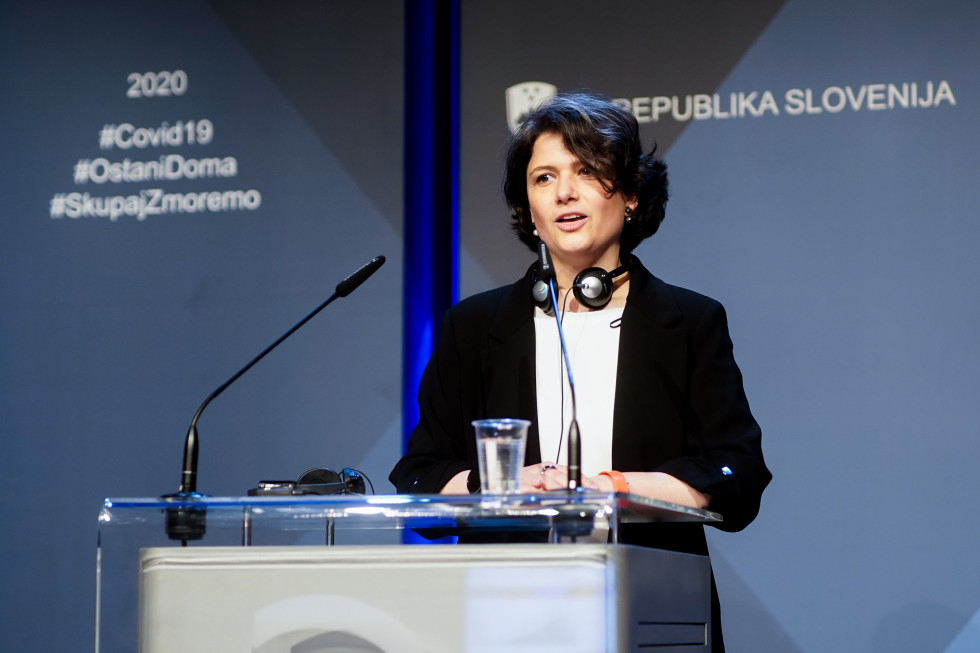Epidemiological situation in Slovenia very good, in Italy improving

Flavia Riccardo | Author Anže Malovrh/STA
Despite two new confirmed infections, Mario Fafangel assessed the epidemiological situation in Slovenia as very good. With regard to today's new infection he said that individual infections would continue to occur for a long time. In each new case the epidemiologists will act appropriately in accordance with professional standards: an epidemiological investigation will be launched and the contacts of infected persons will be traced. At this stage, it is vital that we have a good system of case detection and response in accordance with the established protocols for tracking infectious diseases.
Globally, the epidemic is not abating. However, the data show that in Europe the epidemiological situation is more favourable. Mr Fafangel emphasised that a downward trend is evident. "The most important information for epidemiologists is the 14-day cumulative incidence per 100,000 people," he explained, adding that this is how the situations in all countries, including our neighbours, are compared. In the countries bordering Slovenia, the situation has improved according to all epidemiological indicators and in most of them the incidence is below 10. In light of the announced re-opening of Italy, Mr Fafangel emphasised that this neighbouring country is also entering a new phase in the epidemic’s abatement. According to the most recent data, the 14-day cumulative incidence is 13.
Good cooperation with Italian epidemiologists
According to Mr Fafangel, the Slovenian National Institute of Public Health has been working well with its Italian counterpart on exchanging data about the epidemiological situation in both countries, the epidemiological measures being taken and projections for the future. Cooperation between the two institutes is vital in light of the potential re-opening of borders: Italy has announced the re-opening of the borders between regions and also the possibility of re-opening its national borders. Today, the directors of both respective institutes, Milan Krek and Silvio Brusaferro, exchanged relevant information over a video conference. More about the re-opening of Italy will be known tomorrow, after the session of the Italian Government, and on Saturday, when the Italian Foreign Minister Luigi Di Maio will, as part of his European tour, meet with the Slovenian Foreign Minister Anže Logar in Ljubljana.
The epidemiologist at the Italian Istituto Superiore di Sanità, Flavia Riccardo, also assessed the situation in Italy as good. Italy is still implementing numerous measures at the local and national levels, such as maintaining physical distance, raising public awareness, using facemasks and regularly disinfecting. Ms Riccardo highlighted that there is currently no uncontrolled spread of the virus in Italy, and that only a few local hotspots have been recorded. Italy is aware of how important it is that the situation in the country has been improving with regard to obtaining high-quality data, increasing the strength of the health system and raising public awareness.
Asked by a journalist what Italian professionals’ main message would be to the Slovenian public, Ms Riccardo responded that we should by no means underestimate the virus. Like Mr Fafangel before her, she highlighted the unclear clinical picture: people have mild symptoms, perhaps are not even aware of them, and so the virus spreads. Ms Riccardo and Mr Fafangel both emphasised that preventive measures are vital, and above all that people who are ill must stay at home. Mr Fafangel added that the 14-day incubation period causes great problems for epidemiologists, as it is very difficult to trace all contacts for such a long period.

